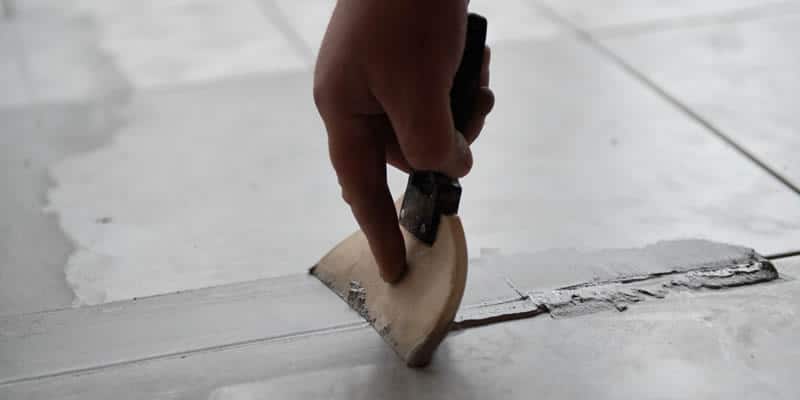Can You Put New Grout on Top of Old Grout?
Wondering if it’s possible to put new grout on top of old grout? Yes, absolutely.
But is it the right thing to do? Probably not.
Let’s dive right in to discover why regrouting is necessary and what’s the best way to do it.
Regrout to Give Your Space a Whole New Look
No matter how well you’d sealed your grout, you may notice it cracking, separating, or crumbling after some time. Grout is porous and can absorb liquid and contaminants that may cause it to degrade. In addition to making your tiles unsightly, grungy grout can result in serious problems if you don’t do anything about the water sinking between the joints of the tiles.

If you spot cracks, stains, or mold, it’s time to regrout your tile surfaces! A new application of grout won’t only make your tiles look cleaner but also more resistant to water and impurities.
So Is It Okay to Put New Grout on Top of Old Grout?
When it comes to regrouting, the first thing to come to your mind may be to apply a new layer of grout over the old layer. Below are a couple of reasons you shouldn’t do this.
- Regrouting over existing grout means the new mixture may not properly adhere to the tile edges, exposing the material to water and potentially harmful substances. Even if you plan to add grout just where it has cracked or separated, it’ll likely break away after some time and you’ll be back at square one.
- Applying grout over existing grout doesn’t look appealing. You may still see the old layer of grout below the new layer. Besides, if you want to treat only a few areas, you’ll easily notice a difference between the regrouted and untreated surfaces.
What’s the Best Way to Refresh Your Grout?
While it’s not a good idea to grout over top of existing grout, you don’t necessarily have to remove all the grout either. Complete replacement of the grout can be costly and time-consuming and is often unrequired.
What’s important is to wipe and chip the dirty, cracked grout so that the new layer can adhere well. While at it, look for any problems that may have caused the grout to get dirty and moldy. Make sure you address these issues before laying down the fresh layer of grout.
Here are the steps you need to follow when regrouting.
- Scrape all the bits of old grout before you begin
- You can use a vacuum to ensure the surface is thoroughly cleaned
- Wash the floor or walls to remove dirt
- Mix the grout as per the instructions and use a grout float to spread it evenly into all the joints
- Wash the area with a damp sponge and smoothen the joints
- Allow the grout to dry before rewashing the surface
- Use a clean, dry towel to buff it and let it sit for a week before sealing
Alternatively, you can call tile and grout cleaning specialists at My Dirty Grout and put the hard work on auto-pilot. For tile and grout cleaning, restoration, and sealing services, get in touch with us.
